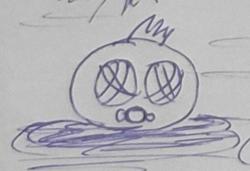I'd like to get the game I'm working on to look like it uses an old software renderer, and one of the artifacts I'd like to reproduce is how in many old games (specifically on the PS1, but also many computer games) the vertices would shake slightly. From what I can find this was because the coordinates were passed from the math hardware to the rasterization hardware in integers. I tried to produce a similar effect by flooring the calculated positions in my vertex shader:
gl_Position.xy=floor(gl_Position.xy*256)/256;
but it doesn't seem to produce any noticable effect unless I lower the 256 down to less than 10, and then it is EXTREMELY wobbly to the point of being unusable. (I chose 256 because my window is 1024 pixels wide, and the position ranges from -1 to 1 (unless I'm remembering this incorrectly?))
Any ideas?








